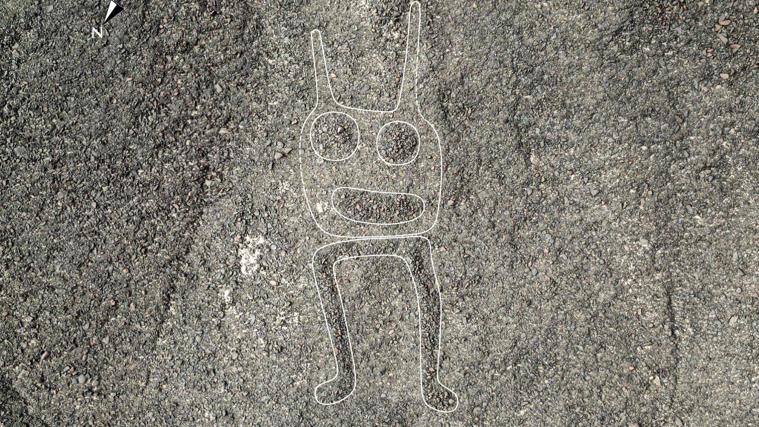Concern in Peru over the reduction of 2,400 square kilometers in the Nazca Lines reserve area

The Peruvian government's decision to reduce the reserve area of the famous Nazca Lines by 2,400 square kilometers is worrying archaeologists, environmentalists, and heritage advocates in general, who fear that illegal mining in the area will damage the 2,000-year-old geoglyphs.
The international association María Reiche , a non-profit collective created to continue the legacy of the young German woman who discovered the enigmatic figures in the Peruvian desert by chance and dedicated her life to defending and investigating the Nazca Lines, issued an alert yesterday on its social networks: "We do not accept the 42% reduction of the reserve area of the Nazca-Palpa lines and geoglyphs. The Ministry of Culture cannot be allowed to destroy our universal cultural heritage."
The association's president, Ana María Cogorno, told The Guardian that "the area being separated is exactly where some of the oldest rituals took place, according to our research."
The Ministry of Culture announced last Thursday the reduction of the reserve's area from approximately 5,600 square kilometers to 3,200 square kilometers. According to its head, Fabricio Valencia, the decision " does not alter or affect the area inscribed as a World Heritage Site or its buffer zone recognized by UNESCO , so the Outstanding Universal Value (OUV) of the cultural asset remains intact."
The minister said the reduction in the area responds to the need to more accurately reflect the relationship between the geoglyphs and the physical characteristics recorded in the area, ensuring their protection and preservation, according to Efe.
"I must clarify and emphasize that the area inscribed on the World Heritage List and the buffer zone have not been affected. That is, the area that has been inscribed on the World Heritage List and the buffer zone is within the 3,200-kilometer polygon, which remains an archaeological reserve ," Valencia said.
In response to the fears raised, the minister acknowledged on Saturday the existence of illegal mining within the reserve of the famous Nazca Lines. "Unfortunately, the issue of informal mining is an activity present in this area, but the measure we have taken does not mean that it will increase, nor does it mean that the likelihood of any impact from informal mining will increase . That's not going to happen," Valencia said on RPP radio.
When asked for more details about the existence of this illegal activity in the reserve, the minister stated that "there are some mining deposits," but that he does not have "exact information on what type of mineral is there," according to Efe.
 One of the 303 new geoglyphs discovered by scientists at Yamagata University in Japan
AFP
One of the 303 new geoglyphs discovered by scientists at Yamagata University in Japan
AFP
The head of the Ministry of Culture explained that the archaeological reserve in question, demarcated in 2004, covered an area of approximately 5,600 square kilometers. After gathering information and conducting studies for more than 20 years, it has been determined that approximately 3,200 square kilometers correspond to the cultural area.
The ministry recalled that the Nazca Lines and Geoglyphs Archaeological Reserve was declared by a resolution dated July 26, 1993, and subsequently, by a resolution dated August 13, 2004, it was specified that it covered an area of 5,633.47 square kilometers.
Thanks to artificial intelligence , more than 300 new mysterious lines dating back more than 2,000 years were discovered in 2024 , adding to the 430 previously discovered geoglyphs. Scientists from Yamagata University, led by Masato Sakai, and IBM Japan, investigated an area that initially covered about 9% of the Nazca plains. Due to their positive results, they expanded the study to cover the entire area and told ABC that they had found "1,309 candidates that have a high probability of being geoglyphs." Of these, they conducted field studies on 26%, which is what they presented, but Sakai indicated his intention to conduct surveys on the remaining 74%. It is therefore possible that even more will be discovered in the future.
ABC.es





